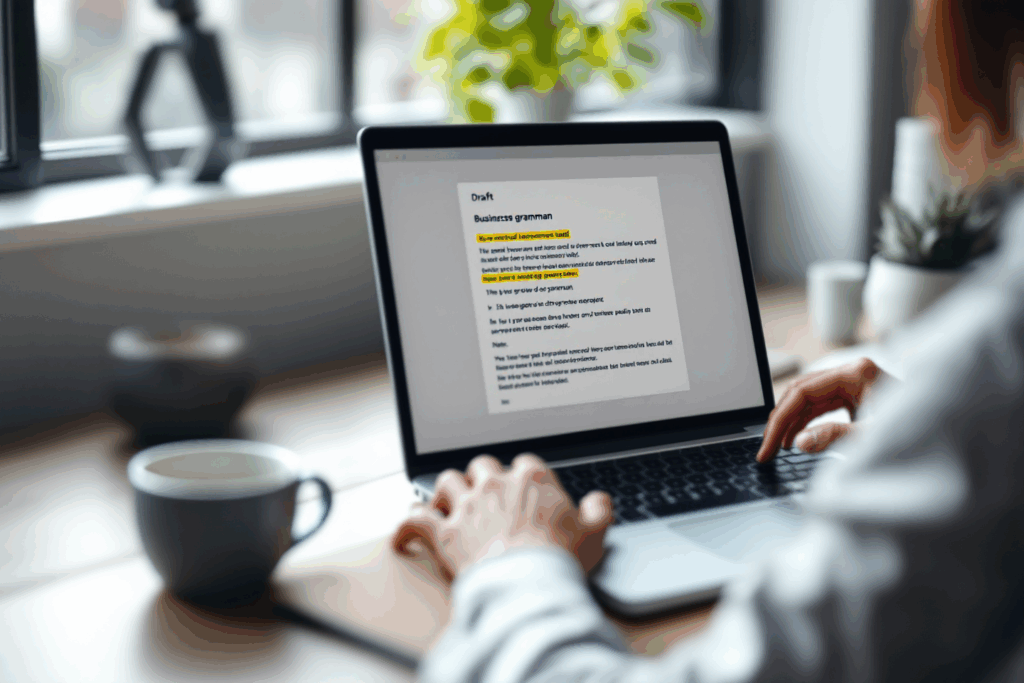
Present Simple Tense 1
English Blogs “Let’s Learn, Explore, and Connect to the World” Present Simple Tense 1 I. Introduction to the Present Simple Tense in English Mastering the


Navigating the use of ‘be going to’ for future intentions requires not just an understanding of its structure but also an awareness of when and how to use it correctly. Here, we offer practical tips for its usage and highlight common mistakes to avoid.
 Planned Future Actions: Reserve ‘be going to’ for actions you have planned or decided upon. This helps differentiate it from spontaneous decisions, which are typically expressed with ‘will’.
Planned Future Actions: Reserve ‘be going to’ for actions you have planned or decided upon. This helps differentiate it from spontaneous decisions, which are typically expressed with ‘will’.
 Predictions Based on Evidence: Use ‘be going to’ for predictions when there is observable evidence. For example, use it when commenting on imminent events based on what you see or know.
Predictions Based on Evidence: Use ‘be going to’ for predictions when there is observable evidence. For example, use it when commenting on imminent events based on what you see or know.
 Expressing Certainty: Opt for ‘be going to’ when you want to convey a sense of certainty about your plans or predictions.
Expressing Certainty: Opt for ‘be going to’ when you want to convey a sense of certainty about your plans or predictions.
 Confusing with ‘Will’: Avoid using ‘be going to’ for spontaneous decisions or uncertain predictions. Remember, ‘will’ is better suited for those contexts.
Confusing with ‘Will’: Avoid using ‘be going to’ for spontaneous decisions or uncertain predictions. Remember, ‘will’ is better suited for those contexts.
 Incorrect Verb Form: Always follow ‘going to’ with the base form of the main verb. A frequent mistake is using the -ing form or the past tense.
Incorrect Verb Form: Always follow ‘going to’ with the base form of the main verb. A frequent mistake is using the -ing form or the past tense.
 Overusing ‘Be Going To’: Be mindful not to overuse this construction. It’s not suitable for every future scenario, such as scheduled events or habitual future actions.
Overusing ‘Be Going To’: Be mindful not to overuse this construction. It’s not suitable for every future scenario, such as scheduled events or habitual future actions.
 Understanding the context is key in choosing between ‘be going to’, ‘will’, and other future forms. Consider the nature of your action or prediction – is it a firm plan, a spontaneous decision, or a scheduled event?
Understanding the context is key in choosing between ‘be going to’, ‘will’, and other future forms. Consider the nature of your action or prediction – is it a firm plan, a spontaneous decision, or a scheduled event?
 Role-Playing Exercises: Engage in role-plays that involve making plans or predictions about the future. This can help you practice using ‘be going to’ in appropriate contexts.
Role-Playing Exercises: Engage in role-plays that involve making plans or predictions about the future. This can help you practice using ‘be going to’ in appropriate contexts.
 Writing Practice: Write about your future plans or predictions using ‘be going to’. This can be through journal entries, emails, or social media posts.
Writing Practice: Write about your future plans or predictions using ‘be going to’. This can be through journal entries, emails, or social media posts.
 The nuances in using ‘be going to’ can often be subtle. Paying attention to native speakers and how they use this construction can provide valuable insights into its correct usage.
The nuances in using ‘be going to’ can often be subtle. Paying attention to native speakers and how they use this construction can provide valuable insights into its correct usage.
 Along with mastering ‘be going to’, expand your vocabulary with phrases and expressions that are commonly used to talk about the future. This will enhance your overall ability to discuss future plans and intentions.
Along with mastering ‘be going to’, expand your vocabulary with phrases and expressions that are commonly used to talk about the future. This will enhance your overall ability to discuss future plans and intentions.
 ‘Mastering ‘be going to’ for expressing future plans and intentions is a vital skill in English. By understanding its correct usage and being aware of common mistakes, you can significantly improve your ability to communicate about the future. Regular practice and attention to contextual cues will help you use this construction effectively.
‘Mastering ‘be going to’ for expressing future plans and intentions is a vital skill in English. By understanding its correct usage and being aware of common mistakes, you can significantly improve your ability to communicate about the future. Regular practice and attention to contextual cues will help you use this construction effectively.

English Blogs “Let’s Learn, Explore, and Connect to the World” Present Simple Tense 1 I. Introduction to the Present Simple Tense in English Mastering the

English Blogs “Let’s Learn, Explore, and Connect to the World” Present Simple Tense 2 II. Understanding the Present Simple Tense Definition and Structure At its
“English Article Collection: Understanding Business and Social Media Today” is your gateway to mastering this dynamic world. This meticulously curated compilation is more than just a book; it’s a journey through the realms of business awareness and social media savvy, presented in a language that speaks to beginners and experts alike.



